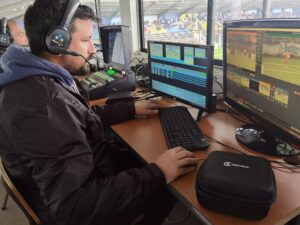There are three kinds of video coding algorithms used often: MJPEG, H.264, H.265, all of which are lossy compression.
Before we talk about MJPEG, H.264, H.265, we are to have a fair understanding towards what is a video encoder, why shall we encode a video encoder, and what the benefits are regarding it.

MJPEG (Motion JPEG) is widely used in the field of non-linear editing. It can be accurate to frame editing and multi-layer image processing. It treats moving video sequences as continuous still images. This compression method compresses each frame individually and completely. In the editing process, each frame can be stored randomly and can be edited to the frame accuracy. Since M-JPEG only compresses the spatial redundancy within the frame and does not compress the redundancy difference between the frames, the compression efficiency is not high.
H.264 is a highly compressed digital video codec standard proposed by the Joint Video Team (JVT) jointly formed by the ITU-T Video Coding Expert Group (VCEG) and the ISO/IEC Moving Picture Expert Group (MPEG) . It can filter out many redundant detailed data that human eyes cannot perceive through calculations, reducing the amount of data. At the same time, its encoding is based on the difference between the front and rear frames, so the compression rate is very high. H.264 supports up to 2048×2048 resolution images, so for common resolutions, it supports up to 1080P (1920×1080) and cannot support 4K.
H.265 is an upgraded version of 264 algorithm. Under the same image quality, the compressed data volume only needs half of H264, or the image quality of H265 is twice as good as H264 under the same amount of data. H265 can support up to 8K video compression.
The audio coding algorithms applied are mainly G.711 and ACC.
G.711 is a simple code with very low computational requirements. Its main application target is voice-based telephony applications. It appeared very early and simple enough so it has strong versatility and compatibility.
AAC (Advanced Audio Coding), started in 1997, is found based on MPEG-2 audio coding technology. It was jointly developed by Fraunhofer IIS, Dolby Laboratories, AT&T, Sony and other companies to replace the MP3 format.










